Discover
An exceptional natural setting
Frioul Island
Discover the archipelago
The Frioul Islands are home to exceptional flora and fauna and are an ideal destination for those who love nature, history, unusual walks, swimming and water sports.
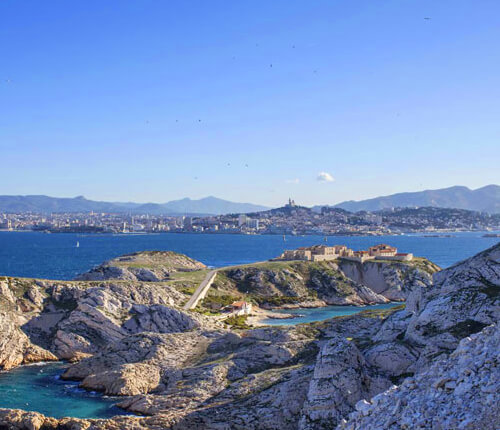
Frioul is composed of two islands, Ratonneau and Pomègues, linked by a dyke forming a harbour.
Ratonneau is the most frequented island. You will discover the Pointe Brigantin, the Morgeret cove, the Ratonneau fort overlooking the magnificent Saint-Estève cove, the Eoube harbour and the former Caroline hospital, which now hosts numerous cultural events.
As for Pomègues, it remains wilder and more authentic with the Crine cove, the port and the Pomègues tower which offers a magnificent panorama.
A little history
Linked to that of Marseille, the history of the Frioul Islands really begins with the arrival of Greek sailors who, in the 6th century BC, founded Massalia. In 49 BC, Julius Caesar’s fleet dropped anchor off the islands and laid siege to the city for several days.
During the following centuries, the archipelago was regularly used as a stopover.
Throughout the 16th century, the Friuli Islands were at the forefront of attacks by French and foreign fleets, particularly Spanish and Italian. In 1597, the Florentines succeeded in seizing Pomègues and built a defensive tower there. As an outpost of the Phocaean city, the archipelago became even more fortified.
For two centuries, this archipelago played a very important sanitary role. Indeed, the many commercial exchanges exposed Marseille to the plague and cholera.
It was in the Frioul Islands, and particularly in the natural port of Pomègues, that contaminated ships and their goods were quarantined. In the 19th century, a dyke was built between Ratonneau and Pomègues, linking the port of Pomègues and the new lazaretto, north of Ratonneau. The Caroline Hospital offered an architectural and sanitary conception ahead of its time. The hospital was definitively closed in 1948.
During the Second World War, the Germans, who had settled in the old forts, were bombed by the American air force.
In 1970, the French Navy ceded the archipelago to the city of Marseille, which built a village and private homes on Ratonneau.
The Calanques National Park
The Frioul archipelago is today a place of life and refuge for many remarkable animal and plant species. The natural land areas of the two main islands are classified as part of the park. The Calanques National Park ensures the protection of this exceptional heritage in order to preserve its richness and offer a quality welcome to visitors.
Thank you for helping us to protect this common heritage and the wild character of the islands by adopting environmentally friendly behaviour.
For more information: www.calanques-parcnational.fr
The Island of If
The famous castle of the Count of Monte Cristo
If you are a history and fiction lover, make a stopover in If to visit the famous castle and relive the epic escape of the Count of Monte Cristo! Enjoy the extraordinary view of Marseille and its surroundings.
The Isle of If, an integral part of the Frioul archipelago, is a haven of peace.
Built by François I in 1524, the fortress on the island of If became, for 400 years, a prison where hard heads, bandits, Protestants and sick people banished from the city were locked up.
The oldest royal fortification in the archipelago, the If Castle was immortalised by the legendary Count of Monte Cristo, hero of Alexandre Dumas’ novel.
The walkway offers a breathtaking view of Marseille and its extraordinary bay.
The If Castle is now open to the public by the Centre des Monuments Nationaux.
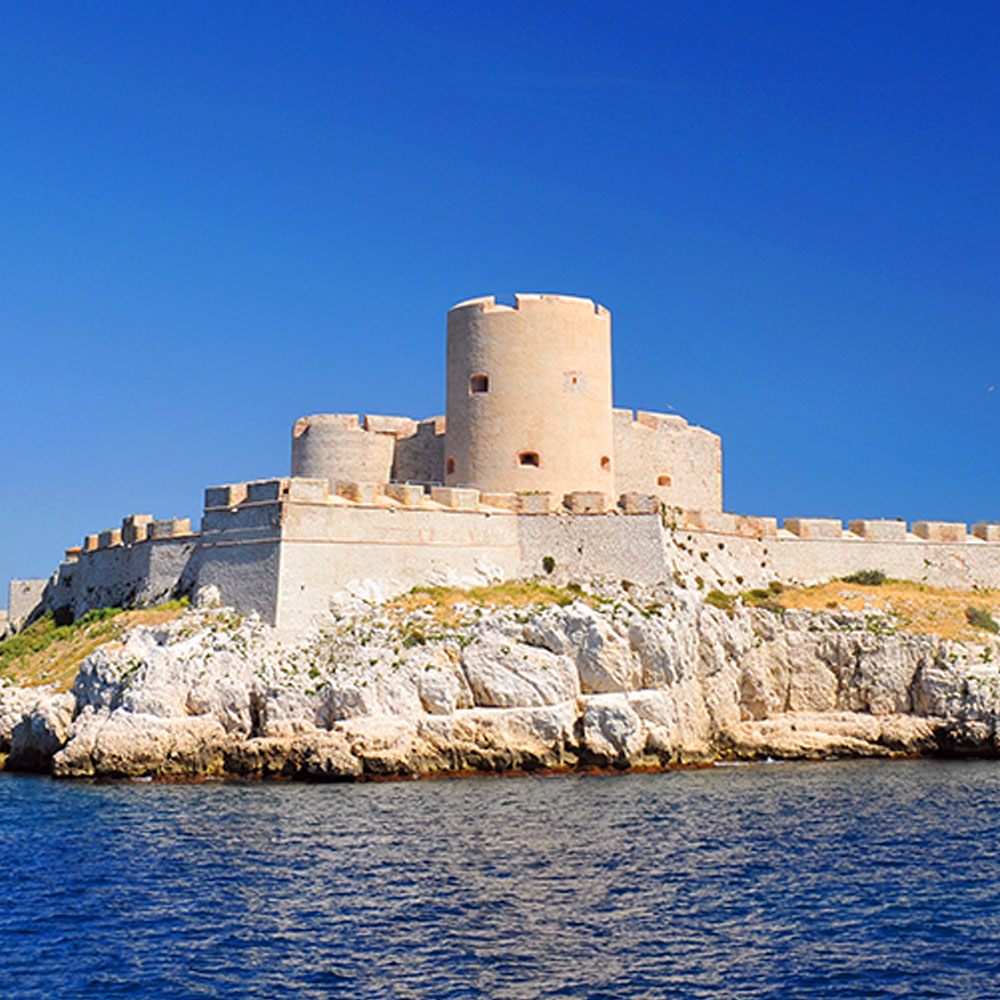
Visit the historical monument
Access to the island is subject to a fee, tickets are on sale on arrival on the If Island.
Introduction to the visit: 35 minutes. Self-guided tour: 1 hour minimum.
Difficult access for people with reduced mobility.
More information on the If Castle website: www.chateau-if.fr
Activities
Discover the treasures of the archipelago
With its various footpaths and wild creeks, the Frioul is an ideal area for hikers and swimmers.
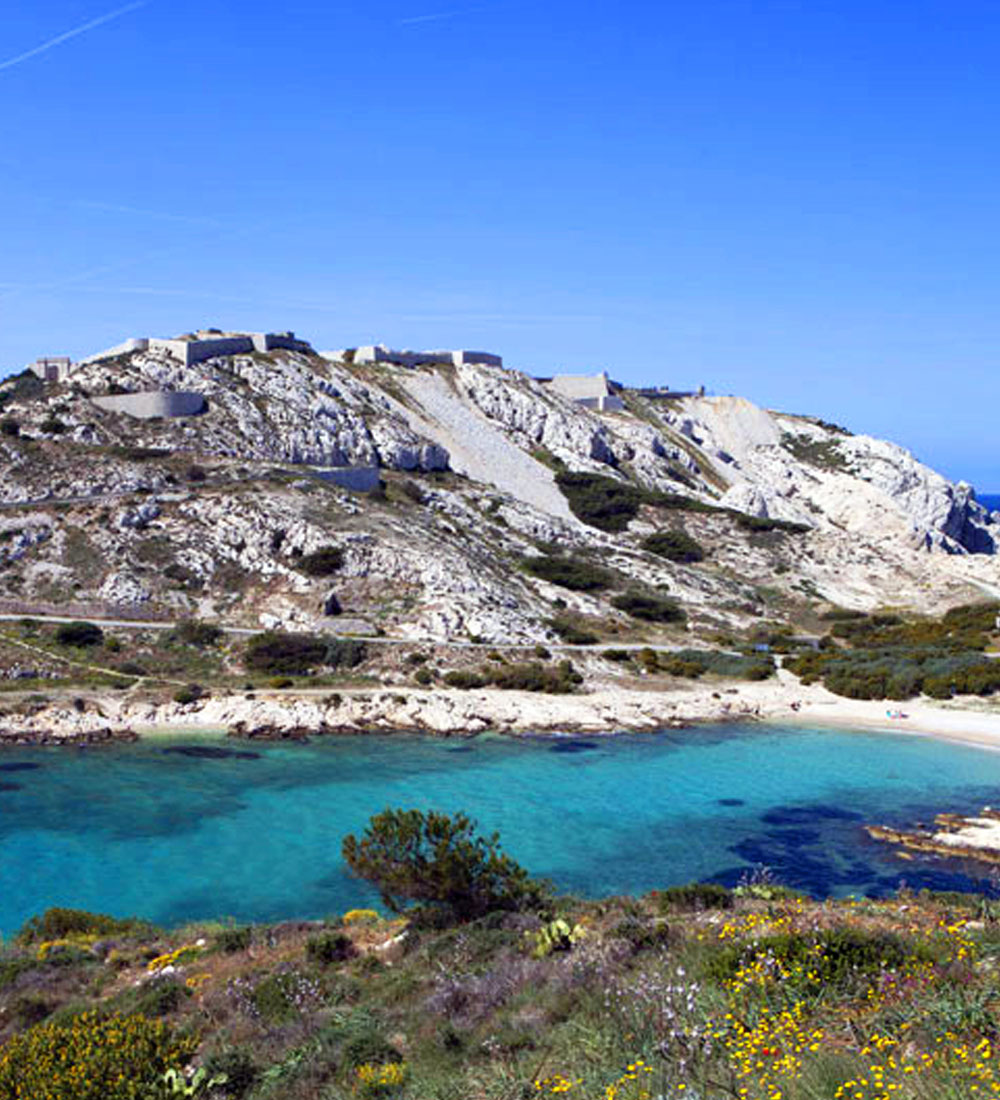
Hiking, swimming and leisure activities on the island of Frioul, there is no shortage of activities on the archipelago.
Do you like swimming and the sea bed? You can go to the beaches of Frioul Island, Morgiret and St Estève, or to the other wilder creeks.
In high season, it is also possible to practice water activities such as scuba diving, canoeing or rent a motor boat (without a licence) at the water sports centre. An accommodation centre also hosts sea classes for the discovery of the marine environment and sports courses for diving enthusiasts.
In the heart of the village, opposite the small marina, restaurants, shops and boutiques invite you to take a relaxing break.
Guided tours
Guided tours of Frioul and the If Castle can be organised by the Tourist Office (only for groups)
More information on : www.marseille-tourisme.com
The fleet
Discover our fleet and come aboard!
Three boats are in service and provide daily connections to the islands throughout the year: Chevalier Paul, Edmond Dantès and Henri Jacques Espérandieu
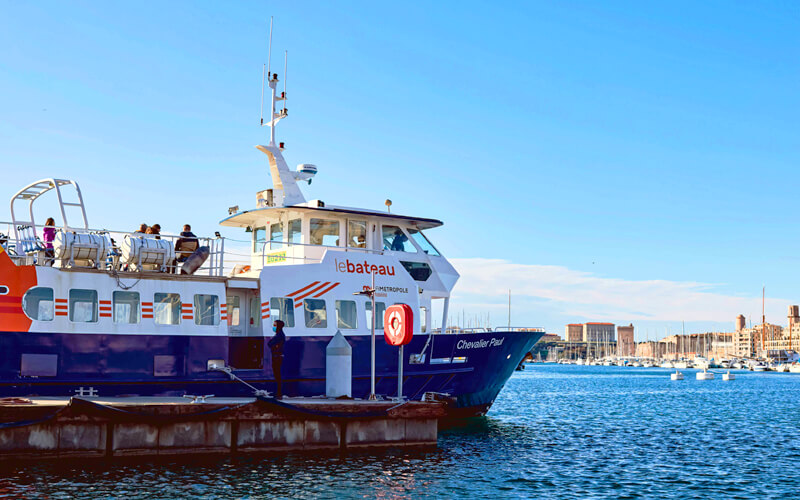
Chevalier Paul
A glorious symbol linked to Marseille’s heritage! Born at sea in the harbour of Marseille in 1598, son of a washerwoman. It is presumed that the governor of the If Castle, Paul de Fortia, was his father. He began sailing at the age of twelve.
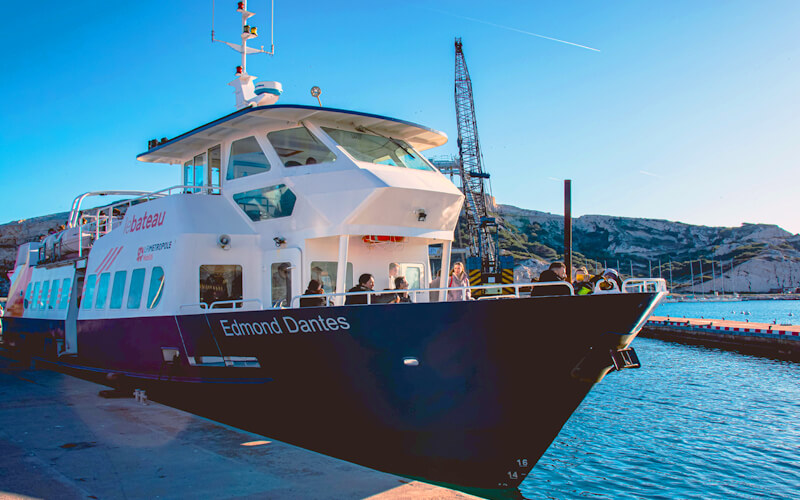
Edmond Dantès
A romantic escapade! Here is a fictional hero and a very real place associated in everyone’s mind by the famous story of Edmond Dantès, imprisoned in the If Castle. Completed in 1844, this novel by Alexandre Dumas was an international success.
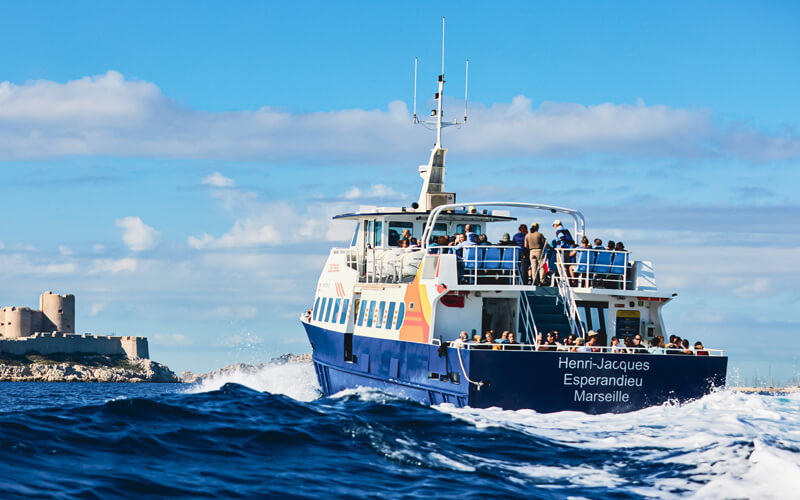
Henri-Jacques Espérandieu
A great name in Phocaean architecture! Born in Nîmes, his passion remains Marseille “the city of a thousand perfumes”. He carried out his most prestigious projects there: the West façade of the Major, the Longchamp Palace, the Notre Dame de la Garde Basilica.
Safety and environment
The shuttles comply with safety standards and meet environmental requirements.
They have an indoor and an outdoor area.
Capacity: 160 passengers and 4 crew members
Length: 24 metres / Speed: 20 knots
In Pictures
@lebateaufrioulif

